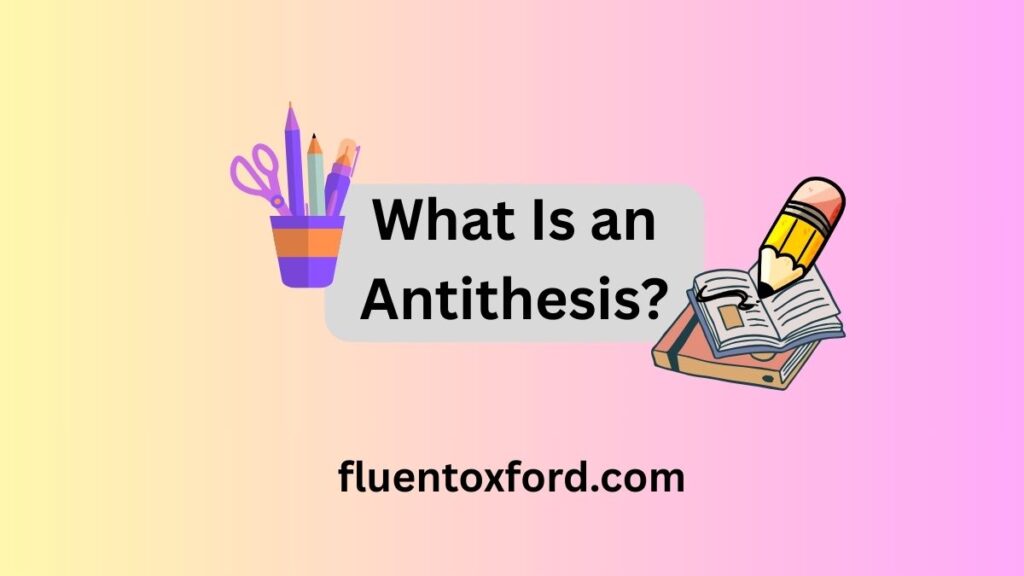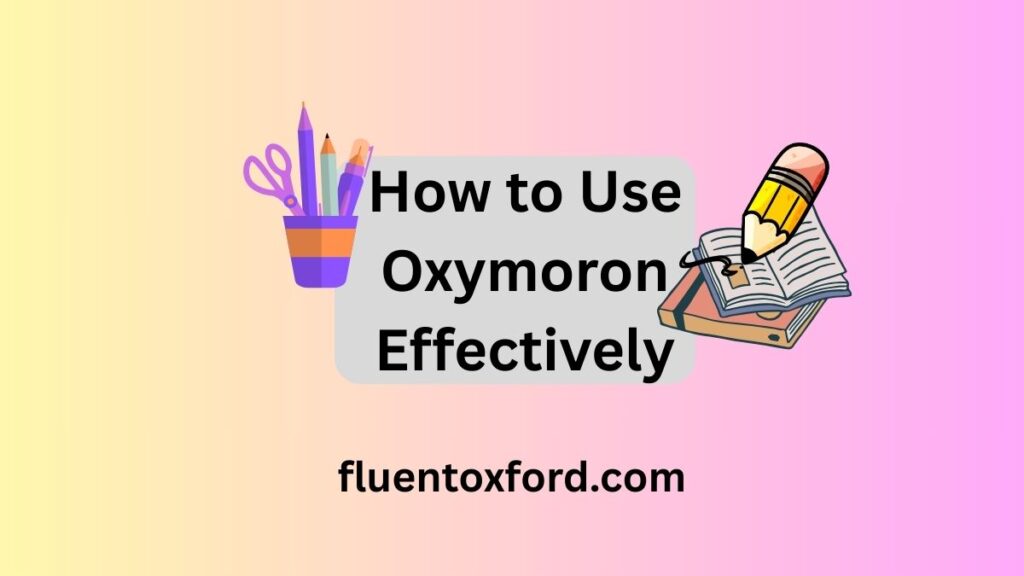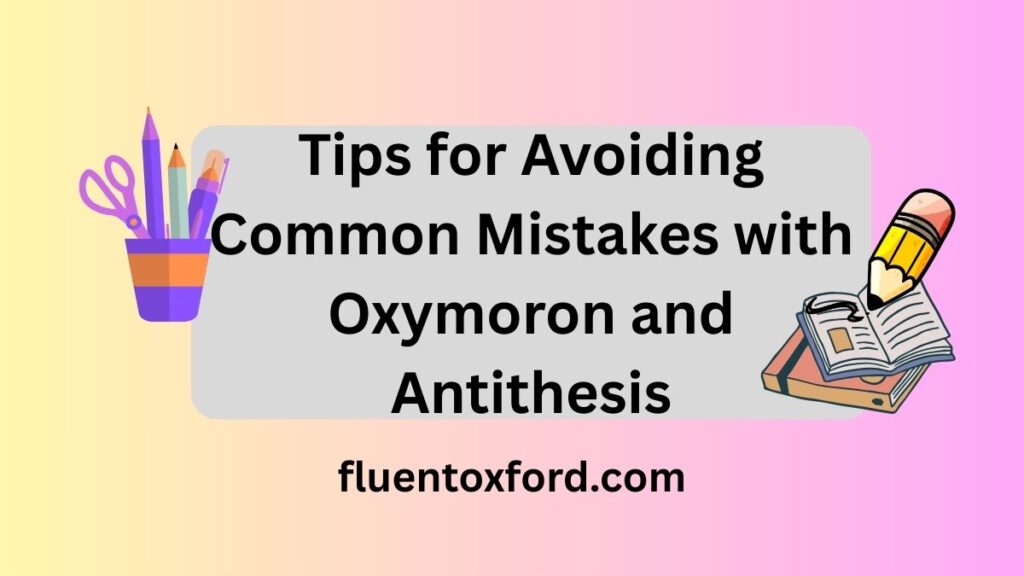Oxymoron vs Antithesis: What’s the difference? lies at the heart of understanding how contrast shapes meaning in language. An oxymoron is a literary device where two contradictory terms are combined to create a paradoxical effect, such as “open secret” or “cold fire.” In contrast, antithesis places opposing ideas in a parallel structure to highlight stark differences, often used to sharpen arguments or emphasize tension. Though both rely on contrast, their construction and rhetorical purpose differ, making this distinction essential for students, writers, and communicators.
Bold and evocative, these devices are more than just stylistic choices—they are tools of persuasion and depth. From Shakespeare’s tragic dialogues to modern advertising slogans, oxymoron and antithesis continue to captivate audiences. Their ability to deliver complexity in a single phrase or sentence transforms ordinary language into something powerful and memorable.
Exploring Oxymoron vs Antithesis: What’s the difference? reveals how contrast operates in both subtle and striking ways. While an oxymoron blends contradictions to create a nuanced idea, antithesis structures opposing thoughts to sharpen clarity and conflict. By mastering these rhetorical tools, one can elevate writing, speeches, and everyday communication with sophistication and impact.
What Is an Oxymoron?
An oxymoron is a literary device where two contradictory or opposite words are placed side by side. This combination creates a fresh, often surprising expression that makes readers stop and think.
For example, “bittersweet” combines “bitter” and “sweet,” which seem opposite but together describe a complex feeling.
Characteristics of Oxymorons
- Usually just two words (like adjective + noun)
- Figurative Meaning
- Creates a paradox or irony
- Used to produce strong images or emotions
- Common in Everyday Language and Literature
Common Examples of Oxymorons
- Deafening silence – Describes a silence so intense it feels loud.
- Bittersweet – Expresses a mix of happiness and sadness.
- Living dead – Refers to beings like zombies, who are both alive and dead in fiction.
- Open secret – Something widely known but officially undisclosed.
- Act naturally – Encourages someone to behave naturally, while “acting” is typically staged.
- Original copy – A duplicate that is officially recognized as the first of its kind.
- Jumbo shrimp – Combines a large adjective (“jumbo”) with a typically small creature (“shrimp”).
- Seriously funny – Describes something that is very humorous, possibly in an unexpected way.
These oxymorons are often used in literature, casual speech, and creative writing to add irony or depth.
What Is an Antithesis?

Antithesis is a rhetorical device where two opposite ideas are expressed in parallel phrases or clauses to highlight their contrast.
For example, Charles Dickens wrote, “It was the best of times, it was the worst of times.” The two opposing ideas are balanced in structure to emphasize the contradiction.
Characteristics of Antithesis
- Involves full phrases or sentences
- Uses parallel structure (similar grammar)
- Emphasizes contrast to clarify or persuade
- Used in Rhetoric and Persuasion
- Enhances Style and Memorability
Famous Examples of Antithesis
- “It was the best of times, it was the worst of times.” – Charles Dickens, A Tale of Two Cities
- “That’s one small step for man, one giant leap for humanity.” – Neil Armstrong
- “To err is human; to forgive, divine.” – Alexander Pope
- “Give me liberty, or give me death!” – Patrick Henry
- “Many are called, but few are chosen.” – The Bible
- “Speech is silver, but silence is golden.” – Proverb
- “Love is an ideal thing, marriage a real thing.” – Johann Wolfgang von Goethe
- “That’s one small step for man, one giant leap for humanity.” – Neil Armstrong (worth repeating for its iconic use of contrast)
These examples are commonly cited in literature, speeches, and rhetoric for their powerful expression of opposing ideas.
Oxymoron vs Antithesis: What’s the Difference?
Oxymoron combines two contradictory words to create a paradoxical meaning, like “bittersweet.” Antithesis contrasts two opposing ideas in a balanced structure, such as “give me liberty or give me death.” Both express contrast, but they function differently in structure and rhetorical purpose.
| Feature | Oxymoron | Antithesis |
| Type | Literary device | Rhetorical device |
| Structure | Two contradictory words | Two contrasting phrases or clauses |
| Purpose | Creates paradox, irony, or vivid imagery | Highlights opposing ideas for emphasis or persuasion |
| Usage | Poetry, slogans, creative writing | Speeches, persuasive writing, debates |
| Example | “Bittersweet,” “Act naturally” | “Speech is silver, but silence is golden.” |
How to Use Oxymoron Effectively

To use oxymoron effectively, choose words with opposing meanings that create a unique or thought-provoking effect, like “sweet sorrow” or “silent scream.” Use them to add irony, humor, or emotional depth. Keep the context in mind, ensuring the contradiction enhances your message rather than confusing it. Oxymorons work best in creative writing, poetry, or dramatic dialogue.
Use oxymorons when you want to:
- Express complex or mixed emotions
- Add irony or humor
- Create vivid and memorable imagery
Best Places to Use Oxymoron
- Poetry and fiction
- Advertising slogans
- Song lyrics and casual conversation
Be careful not to overuse oxymorons because too many can confuse the reader or sound forced.
How to Use Antithesis Effectively
To use antithesis effectively, pair opposing ideas in a balanced sentence structure to highlight contrast, such as “float like a butterfly, sting like a bee.” Use it to emphasize differences, clarify meaning, or create a memorable impact. Ideal for speeches, essays, and persuasive writing, antithesis sharpens arguments and enhances the rhythm and power of your message.
Use antithesis when you want to:
- Make contrasting ideas clear and memorable
- Strengthen arguments or speeches
- Persuade your audience with balanced statements
Best Places to Use Antithesis
- Political speeches
- Motivational talks
- Essays and debates
Example in marketing:
“This isn’t just a watch; it’s a reminder that time waits for no one.”
Can You Combine Oxymoron and Antithesis?
Yes, but it’s tricky. Combining oxymoron and antithesis can add layers of meaning but should be done thoughtfully. Oxymoron and antithesis can be combined for dramatic effect. While oxymoron contrasts within a phrase, antithesis contrasts between ideas. Together, they add depth, irony, and power to language, enriching expression in poetry, speeches, or creative writing.
Example:
“Their cruel kindness is better than no kindness at all.”
Here, “cruel kindness” is an oxymoron, and it’s contrasted with “no kindness” (antithesis).
Examples of Oxymoron and Antithesis in Sentences
Oxymoron:
- “Clearly confused.”
- “Alone together.”
- “Deafening silence.”
Antithesis:
- “You are easy on the eyes but hard on the heart.”
- “Many are invited, but few are chosen.”
Combined:
- “Their silence spoke louder than words — a cruel kindness in disguise.”
Combined Use of Oxymoron and Antithesis
- “Deafening silence contrasted with loud whispers.”
(Oxymoron: “deafening silence”; Antithesis: silence vs. whispers) - “The bittersweet victory was both a triumph and a defeat.”
(Oxymoron: “bittersweet victory”; Antithesis: triumph vs. defeat) - “In the cruel kindness of fate, hope and despair collide.”
(Oxymoron: “cruel kindness”; Antithesis: hope vs. despair) - “Her icy fire burned with cold passion and fierce calm.”
(Oxymoron: “icy fire”; Antithesis: passion vs. calm) - “The open secret revealed both truth and deception.”
(Oxymoron: “open secret”; Antithesis: truth vs. deception)
These combinations create rich, layered meanings by blending contradictory words with opposing ideas.
Common Mistakes to Avoid When Using Oxymoron and Antithesis
- Mixing up oxymoron with antithesis by treating contradictory words as full contrasting ideas.
- Using oxymorons in long sentences, which dilutes their impact—keep them short and sharp.
- Placing antithesis without parallel structure, which weakens the contrast and rhythm.
- Overusing oxymorons, making writing confusing or cliché.
- Using antithesis where subtle contrast is needed—sometimes a softer approach works better.
- Creating oxymorons that don’t make sense or lack clear contradiction.
- Ignoring context—both devices need appropriate situations to be effective.
- Making antithesis too obvious or forced, losing natural flow.
- Using oxymoron or antithesis randomly without purpose or effect.
- Failing to balance the tone—oxymoron often adds irony, antithesis emphasizes clarity; mixing tones can confuse readers.
Avoiding these mistakes will help make your use of oxymoron and antithesis clearer, stronger, and more effective.
Tips for Avoiding Common Mistakes with Oxymoron and Antithesis

- Understand the difference clearly—remember oxymoron is a contradiction within a phrase, while antithesis contrasts full ideas.
- Keep oxymorons brief; use just two words or a short phrase to maintain impact.
- Use parallel structure for antithesis to ensure the contrasting ideas balance well and sound natural.
- Use oxymorons sparingly to avoid confusing or overwhelming your reader.
- Choose antithesis when you need clear, strong contrasts rather than subtle or hidden opposites.
- Make sure oxymorons make sense contextually and clearly combine contradictory terms.
- Match the device to the tone—use oxymoron for irony or humor, and antithesis for clarity and emphasis.
- Avoid forcing contrasts; both oxymoron and antithesis should feel natural in the sentence.
- Use these devices purposefully to enhance meaning, not just to sound fancy.
- Read aloud to check rhythm and clarity, especially for antithesis’s balanced structure.
Following these tips will improve your writing and make your use of oxymoron and antithesis more effective.
Where to Use and Where Not to Use These Devices
| Device | Best For | Avoid In |
| Oxymoron | Creative writing, poetry, slogans, advertising, dramatic dialogues, humor, irony, literary works that explore paradox or complex emotions, marketing campaigns to catch attention | Technical or legal writing, scientific reports, academic papers, formal documents where clarity, precision, and unambiguous meaning are essential |
| Antithesis | Speeches, persuasive essays, debates, formal writing, philosophical and political discourse, rhetorical arguments, motivational talks where strong contrast enhances persuasion and memorability | Informal texts or casual chats, social media comments, emails or messages that require simplicity and directness, content meant for quick understanding without deep analysis |
Summary: Which One Should You Use?
- Want a quick, unique expression of contradictory ideas? Use an oxymoron.
- Need to highlight contrasting points clearly and persuasively? Use antithesis.
Both devices help with effective communication and make your message stick.
Conclusion
Understanding Oxymoron vs Antithesis: What’s the difference? helps in using language more effectively. An oxymoron mixes two opposite words to create a new, deeper meaning. An antithesis sets two different ideas side by side to show a clear contrast. Both are useful in writing and speaking, but they work in different ways. Knowing when and how to use each can make your message stronger and more creative.
In short, Oxymoron vs Antithesis: What’s the difference? is not just about grammar or style—it’s about how we express thoughts clearly and powerfully. These tools bring life to ideas and make them more interesting. Whether you’re writing a poem, giving a speech, or telling a story, using oxymoron and antithesis well can make your words stand out. Learning their difference is a small step that makes a big impact.
FAQs
1. What is an oxymoron?
An oxymoron is a figure of speech where two contradictory terms are combined to create a unique expression, like “jumbo shrimp” or “deafening silence.”
2. What is antithesis?
Antithesis is a rhetorical device that juxtaposes contrasting ideas within a balanced grammatical structure to highlight their differences, such as “It was the best of times, it was the worst of times.”
3. How do oxymoron and antithesis differ?
An oxymoron combines two opposing words within a phrase, while antithesis presents contrasting ideas in parallel structures to emphasize their differences.
4. Can oxymoron and antithesis be used together?
Yes, combining oxymoron and antithesis can add depth and complexity to writing by juxtaposing contradictory elements within a balanced structure.
5. Where are oxymoron and antithesis commonly used?
Both devices are prevalent in literature, speeches, poetry, and persuasive writing to create emphasis, evoke thought, and enhance expression.

As an admin at Fluent Oxford, Maida Queen is the driving force behind our vibrant learning community. With a deep passion for English language education, she ensures that our platform remains a dynamic, engaging, and supportive space for learners worldwide.
Maida expertly manages content, assists users with their grammar and fluency queries, and fosters an interactive environment where learning feels effortless and enjoyable. Whether you need guidance, motivation, or just a friendly face in the Fluent Oxford community, Maida is always there to help you reach your English language goals.








